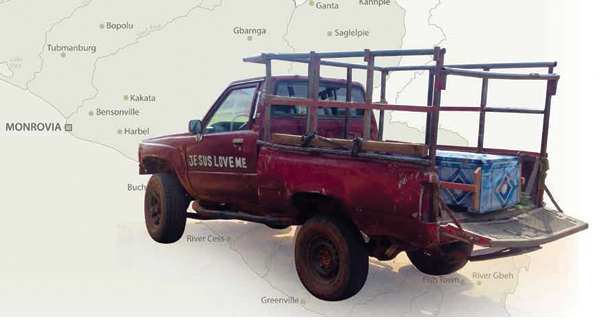
I have good friends in Liberia. I know the culture, the politics, and the medical system there. Once the news broke in March 2014 that the Ebola virus disease (EVD) epidemic was spreading into Liberia, I knew I had to do something to help. Due to some prior health issues, I couldn’t automatically assume that the best way I could help was to provide on-scene acute medical care.
Explore This Issue
ACEP Now: Vol 34 – No 02 – February 2015In 2004, I developed an autoimmune neurological disease and subsequently also developed some significant issues with my eyesight. I stepped down as emergency department medical director, and I’ve made some lifestyle adjustments since then. Despite improvements in my condition, it was an unknown variable whether the intense heat inside the isolation suits and the limited visibility through the goggles or face masks would limit my effectiveness. The last thing I wanted was to become a liability to a medical system that was already in crisis.
To better understand what my options might be, I aggressively started researching the Ebola virus. I also began to study exactly how the epidemic was unfolding. Within weeks, it became clear to me that the overall relief effort was beginning to experience some serious logistical problems. My friends and I decided to see what we could do to help.
Focus on Transportation
Like any large humanitarian operation, the problems were legion, but the most salient logistical problems from my perspective were all in the area of transportation. The international community was starting to address the lack of personal protective equipment and medical personnel, but no one seemed to be noticing that there weren’t enough reliable and task-specific vehicles available in the country to transport these resources to where they needed to go. There wasn’t an emergency medical services (EMS) system, and the few ambulances available were either privately owned or in disrepair.
How were people sick with Ebola supposed to get to the new Ebola treatment units (ETUs)? People had to walk, be carried, ride a bicycle or motorbike, or travel in a private vehicle (usually a Toyota Corolla–sized taxi). People sick with Ebola or those transporting their deceased relatives had to pay to travel in these private taxis, and sometimes, to defray the costs, they did so with other passengers aboard. In fact, in December 2014 a taxi driver was arrested for transporting the corpse of someone who had died of EVD.
It was a very eclectic group of donors that rallied around the cause: humanitarians, a Christian ministry, several Muslim Lebanese businessmen, a US pharmacist, a CEO of an international medical corporation, a US/Liberian forestry and mining company, a physician, a physician assistant, and 20 dedicated Liberians all played a part in making things happen.
Early in the epidemic, there weren’t enough hearses or trucks to collect the bodies in the streets or to form the county burial teams that are now in place. Contact tracers and Ebola awareness teams didn’t have the transportation needed to visit the communities they were being assigned to reach. To make matters worse, Liberia was entering its rainy season, and for the next five months, the jungle roads were about to become very difficult to navigate even using all-wheel drive a rut).
Pages: 1 2 3 | Single Page





No Responses to “Ebola Relief Efforts in Liberia Aided by Emergency Medicine Support, Donations”